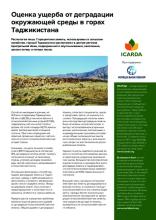Land Library
Welcome to the Land Portal Library. Explore our vast collection of open-access resources (over 74,000) including reports, journal articles, research papers, peer-reviewed publications, legal documents, videos and much more.
/ library resources
Showing items 73 through 81 of 644.The presented paper synthesizes and reviews the history of Fist Nation land management, forming the background of three land management regimes types; the Indian Act land management (IALM), First Nations land management (FNLM) and frameworks of self-government land management (SGLM).
Hybrid land tenure administration occurs in a number of South Africa’s state-subsidised housing projects and in the informal settlements from which the housing beneficiaries tend to be drawn. Ownership is the tenure form in most of these housing projects.
In response to powerful trends in technology, resource and land supply and demand, socioeconomics and geopolitics, cities are likely to increase use of the subsurface in the near future.
Nature-based solutions (NBS) is the latest contribution to the green concept family. NBS is defined as actions based in nature addressing societal challenges.
This paper is presenting research on with possibilities and benefit of applying a customer-oriented approach in public cadastral procedures. Public service providers have raised awareness towards customer-oriented approaches in their procedures during recent decades.
The use of tree-based fallowing as a sustainable land management system may serve as an important developmental pathway out of poverty across drought-prone watersheds in the Upper Blue Nile Basin, Ethiopia.
This Template is designed for standardized description of Sustainable Livestock Management Options by Context (SLiM OxC), in which sustainable livestock management option and its social, economic and ecological contexts are systematically characterized.
With only 7 percent of agricultural land, Tajikistan is a mountainous country located at the heart of Central Asian region, prone to desertification, salinization, soil erosion and forest loss.
Располагая лишь 7 процентами земель, используемых в сельском хозяйстве, горный Таджикистан расположен в центре региона Центральной Азии, подверженного опустыниванию, засолению,




